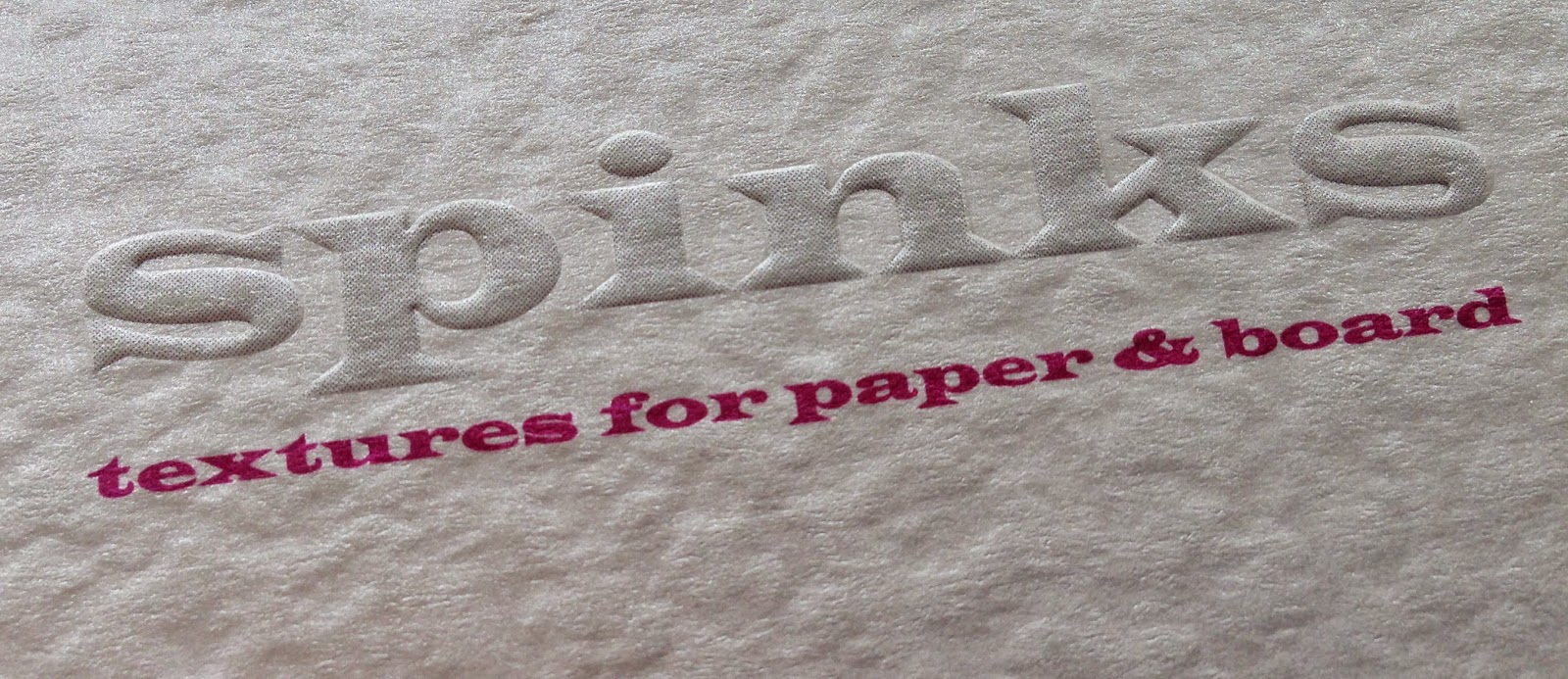Regular followers of this blog will know that in the middle of the month, I publish a "What is ....? post. The article covers various aspects of paper, printing and finishing in greater depth. However, many of these subjects are complex, so these posts are only intended to be a brief introduction to the topic.
What is ...Embossed Paper?
One of the first things to clarify is that this post is about an all over embossed finish on a paper or board. This is more correctly described as paper 'graining' and also referred to as sheet embossing. This article is NOT about 'blind embossing' which is a print finishing process where specific area or areas of a sheet, such as a logo, is embossed.
One of the first things to clarify is that this post is about an all over embossed finish on a paper or board. This is more correctly described as paper 'graining' and also referred to as sheet embossing. This article is NOT about 'blind embossing' which is a print finishing process where specific area or areas of a sheet, such as a logo, is embossed.
Below is an image of a board which has been grained with a linear finish embossing:
Graining/Embossing is a process in which a permanent pattern is put into the surface of the substrate by heavy pressure, generally from a patterned roller. The mark is made by the rollers literally crushing/smashing the paper fibres in the sheet. The process uses a piece of heavy machinery called an 'embossing calender', such as in the picture below:
A small diameter steel roll which is engraved with the pattern pairs up with a larger diameter compressed fibre backing roll (which has some 'give' unlike steel). The paper or board passes through a 'nip' between the two which imparts the pattern on the surface. The image below show the close up detail of an engraved roller with a linen/canvas pattern.
If a one sided effect is required (EG greeting cards or covers) the backing roll is left plain and the pattern is only apparent on one side. For a two sided effect or what is referred to as a 'through embossing' the two rolls are geared together and the metal roll is run against the fibre roll which forms an interlocking male/female impression. The effect produces a pattern on the topside of the sheet and a reverse effect on the underside.
At one time, there were many 'trade embossers' or 'paper grainers' in the industrial world of print and it was mainly a process that was handled by these 'trade' companies. Some paper mills also invested in embossing equipment and larger tonnages were supplied ready embossed by the paper mill. Some paper merchants also bought machines.
These days there are relatively few 'trade embossers' around and many people think that embossed papers and boards ONLY come from the paper mill or (Hull based) paper merchant ...this is not so!
 SPINKS is a trade embossers, based in Enfield, which has been graining paper since the 1960's and they very helpfully supplied the photographs and information for this article. They have a range of over fifteen standard finishes which can be applied to ANY paper.
SPINKS is a trade embossers, based in Enfield, which has been graining paper since the 1960's and they very helpfully supplied the photographs and information for this article. They have a range of over fifteen standard finishes which can be applied to ANY paper. So I now have an example of how this process was applied to a project in the real world. Jason Maclaren at Cantate (www.cantatecommunications.com) was briefed on a project to produce cocktail menus for Dirty Martini, a collection of London based cocktail bars. In order to keep within the budget, Jason supplied a self coloured, black 350gsm board into Spinks and had it 'grained' with their 'Seal' pattern . After graining, the board was then taken to a print finishers where it was 'blind debossed' with a diamond pattern and hot foil blocked with gold foil. As I hope you can see from the image below, it is a cracking result.
So I now have an example of how this process was applied to a project in the real world. Jason Maclaren at Cantate (www.cantatecommunications.com) was briefed on a project to produce cocktail menus for Dirty Martini, a collection of London based cocktail bars. In order to keep within the budget, Jason supplied a self coloured, black 350gsm board into Spinks and had it 'grained' with their 'Seal' pattern . After graining, the board was then taken to a print finishers where it was 'blind debossed' with a diamond pattern and hot foil blocked with gold foil. As I hope you can see from the image below, it is a cracking result.
 |
| Colorset Crimson embossed - click on image to enlarge |
...and don't forget, you can emboss paper after it has been printed - that really isn't rocket science!
Thanks to Gary Spinks and Rebecca Standley at SPINKS Embossers and to Jason Maclaren at Cantate for the interesting case study.
http://spinksembossers.co.uk/
www.cantatecommunications.com
Posted by Justin Hobson 16.02.2015










